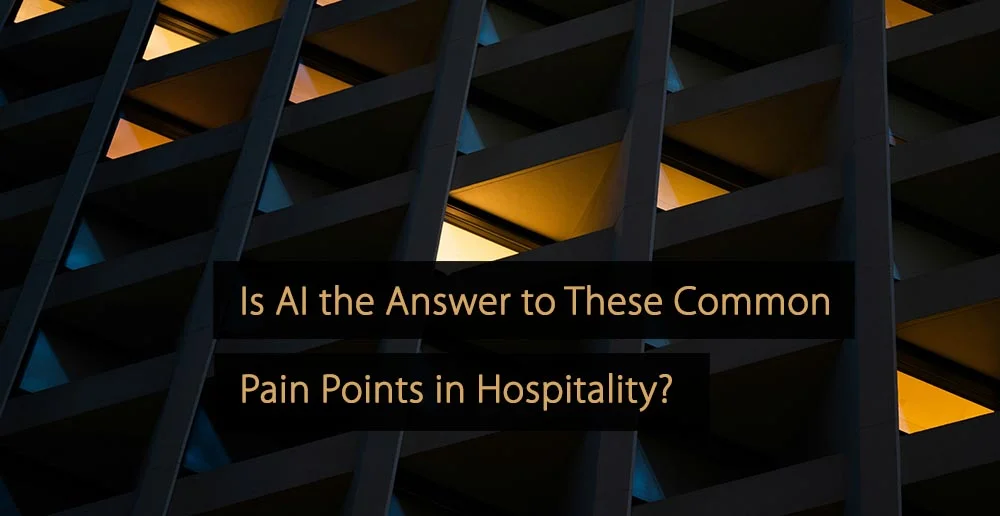Thanks to advances in smartphone technology, augmented reality has experienced a breakthrough over the past few years. It has emerged as a useful tool for businesses and marketers, allowing them to alter how customers perceive their surroundings. This has particularly benefited those operating in the travel industry, as they often sell experiences or physical environments that AR can enhance. In this article, you can see augmented reality’s impact on the travel industry.
Augmented Reality: Explained
Augmented reality, or AR, is a digital technology that changes a person’s perception of their physical surroundings when viewed through a particular device. The technology is similar to virtual reality, but AR does not replace the real-world environment but augments it by overlaying digital components.
Pokemon Go is one of the most notable examples of an augmented reality app. However, the technology extends beyond gaming to marketing. Here, marketers usually use AR to add graphics or useful information to an environment viewed through a compatible device.
Typically, augmented reality is experienced through a smartphone, tablet, or similar device. As a result, it is less expensive for the consumer than most virtual reality-enabled headsets or devices. In many cases, AR also works hand-in-hand with other mobile technologies, including cameras and GPS tracking. According to the Augmented Reality Market Report by Grand View Research, the global augmented reality market size is projected to grow at a CAGR of 39.8% until 2030.
The Importance of Augmented Reality For the Travel Industry
Over recent times, augmented reality has become increasingly popular within the travel industry. This is primarily because it enables hotels and other businesses in this field to enhance the physical environments they are trying to encourage customers to visit, including local sights and hotel rooms.
Unlike other purchases, travel tends to be heavily researched, as customers require lots of information before they arrive. This need for information does not stop when the customer arrives. Augmented reality can ensure that much of this information is available to them 24/7, at times when it is most relevant. According to the Augmented Reality in Travel and Tourism Market Report by Verified Market Research, the global augmented reality in travel and tourism market size is projected to grow at a CAGR of 37.49% until 2030.
Furthermore, one key to AR adoption within the travel industry has been the general change in consumer lifestyles over the past decade. Modern customers are already in the habit of using their smartphones a lot, even when they travel, so the step towards using augmented reality apps on those phones is not a big one.
Table: Importance of Augmented Reality in Travel Industry
| AR Application | Description | Examples |
|---|---|---|
| Pre-arrival Exploration | Allows potential travelers to explore accommodations, destinations, or activities virtually before booking. | Virtual tours of hotel rooms and AR-enhanced views of local attractions. |
| On-site Navigation | Provides guests with AR navigation tools to find their way around hotels or local attractions. | AR maps for hotel amenities and directional assistance for city landmarks. |
| Information Overlay | Displays relevant information about places of interest or services through smartphone cameras. | Historical facts about landmarks and details about local flora and fauna on nature trails. |
| Language Translation | Instantly translates signs, menus, or documents into the user’s preferred language. | AR translation of restaurant menus or museum exhibit descriptions. |
| Enhanced Guest Services | Offers interactive experiences and customer service through AR, like virtual concierge services. | Virtual concierge explaining hotel facilities and interactive room service menus. |
| Interactive Marketing | Utilizes AR for engaging and immersive advertising campaigns. | AR ads that let users explore hotel specials or destination highlights. |
| Personalized Travel Experiences | Tailors travel experiences to individual preferences and behaviors using AR. | Personalized AR travel guides based on interests and AR recommendations for dining and entertainment. |
| Cultural and Historical Enrichment | Augments physical travel experiences with cultural and historical insights. | AR re-creations of historical events at significant sites and augmented museum tours. |
Examples of Augmented Reality in the Travel Industry
The use of augmented reality technology within the travel industry is still a relatively recent development, and, as a result, new uses are always emerging. However, some of the most effective and innovative uses of AR so far are explained in greater detail below:
1. Interactive Hotel Elements
The most common use of AR within the tourism industry has been introducing more interactive elements into hotels, improving the overall experience. Essentially, this allows hotels, resorts, and other similar businesses to provide customers with more information on demand.
For example, The Hub Hotel from Premier Inn, a British resort, made augmented reality compatible with the wall maps it places in hotel rooms. When viewed through a smartphone or tablet, the wall maps include extra information about some of the local places of interest, serving as a tourist information tool.
Example: Augmented Reality Florence Travel Guide – Italy
2. Augmented Tourist Destinations
Away from hotel environments, some companies within the travel industry are developing augmented reality apps, which allow tourists to enhance physical locations and tourist attractions. For example, users may point their smartphone at a building or landmark and learn more about it in real-time.
For example, a user may point their phone at a restaurant and instantly receive reviews or menus or aim their tablet at a historic landmark and be presented with information about its history. This can greatly enhance the entire travel experience and allow tourists to take in information on the go.
Augmented Reality Quest at the Best Western Kelowna
3. Beacon Technology and Push Notifications
Another interesting use of augmented reality relates to beacon technology, which uses Bluetooth. This particular technology is useful within the travel and tourism industry because it allows businesses and marketers to send push notifications or enable certain functions when people enter a specific location.
One of the best examples of this in hotels has been Starwood Hotels using beacon technology to allow customers to unlock their hotel room when they are within close proximity to the door. However, beacon technology can also be used to send users maps, reviews, menus, special offers, or discount vouchers at the most relevant point.
4. Augmented Reality Gamification
Finally, augmented reality has a strong link to the gaming world, and the travel industry is also starting to take advantage of this. Using an augmented reality app, a hotel or hospitality business can improve the customer experience by introducing an element of fun to their physical environment.
Gaming apps using augmented reality have introduced treasure hunt-style elements to hotel buildings, while Best Western has used AR to allow children to see Disney characters on their premises. For adults, examples have included AR apps that allow users to redecorate rooms and apps that place virtual celebrities in the hotel.
Augmented Reality Travel Solutions and the Metaverse
Augmented reality tourism solutions are helping to revolutionize the travel industry, but the power of AR extends far further. In fact, augmented reality is one of the key technologies helping to power the metaverse and metaverse devices. The metaverse refers to 3D virtual worlds where social interactions can take place.
Check out “Metaverse Tourism: Overview, Benefits, Examples and More” if you are interested in a detailed breakdown of the metaverse, how it applies to the travel and tourism industry, the main ways it can assist businesses, and examples of how this technology is already being utilized to improve the customer experience.
Augmented Reality in Travel Industry FAQs
Virtual Reality & Artificial Intelligence
Would you like to learn more about other digital technologies that can benefit your business? Have also a look at the articles “How Virtual Reality is Transforming the Travel Industry” and “How Artificial Intelligence is Changing the Travel Industry”.
Did You Like This Article About Augmented Reality in Travel Industry?
You might also be interested in the following articles:
- Blockchain Technology and Its Uses in the Travel Industry
- Robots in the Travel Industry: Real-World Examples
- How the Internet of Things (IoT) Can Benefit the Travel Industry
- How Can Voice Control Benefit the Travel Industry?
- Ways Facial Recognition Can Be Used in the Travel Industry
More Tips to Grow Your Business
Revfine.com is the leading knowledge platform for the hospitality and travel industry. Professionals use our insights, strategies, and actionable tips to get inspired, optimize revenue, innovate processes, and improve customer experience.Explore expert advice on management, marketing, revenue management, operations, software, and technology in our dedicated Hotel, Hospitality, and Travel & Tourism categories.
This article is written by:
Hi, I am Martijn Barten, founder of Revfine.com. With 20 years of experience in the hospitality industry, I specialize in optimizing revenue by combining revenue management with marketing strategies. I have successfully developed, implemented, and managed revenue management and marketing strategies for individual properties and multi-property portfolios.









I found this information interesting. I want to try out augmented reality travel experiences myself. But real-life examples are still hard to find. I hope product developments like the Apple Vision Pro or Meta Quest devices are going faster to integrate this technology into daily life situations.